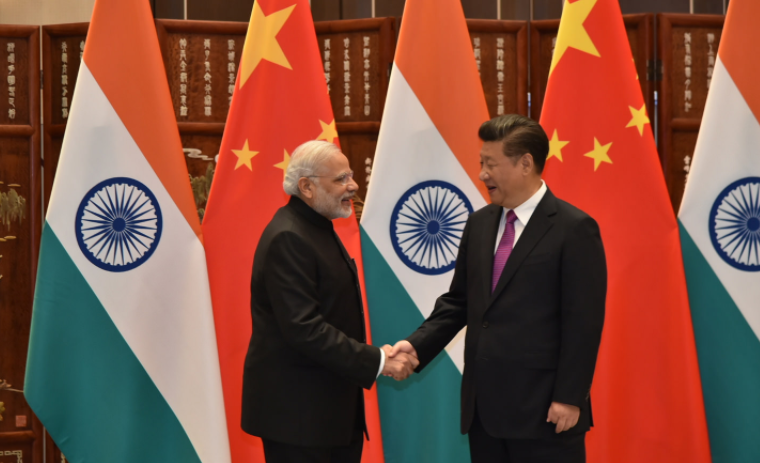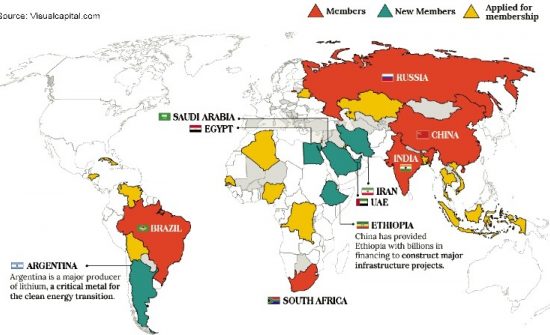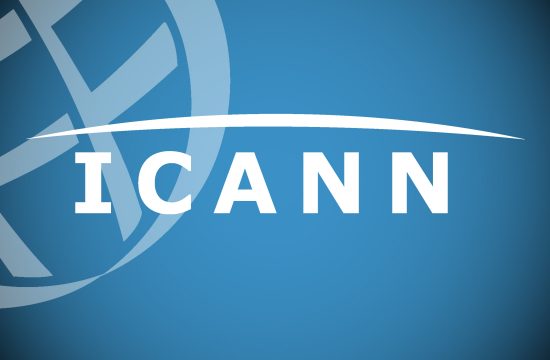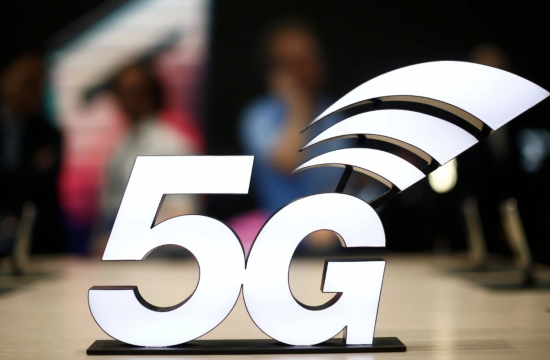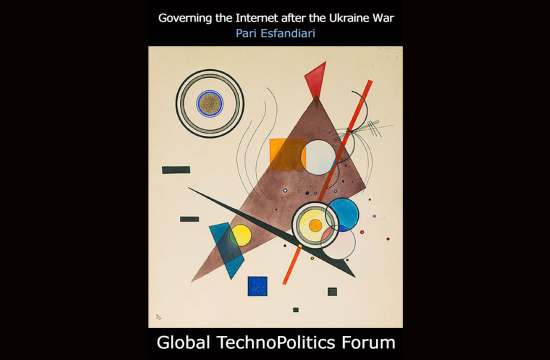Significance of Economic Instruments in Bilateral Relations
First Published at the Center for Economic Diplomacy
As a notable phenomenon of 21st-century international geopolitics, sovereign states tend to seek out to forge cooperation, despite long-standing disputes between them. While government officials and military personnel continue to engage with each other, side channels of communication, popularly referred to as ‘Track II’ (https://foreignpolicy.com/2011/06/20/track-ii-diplomacy-a-short-history/) consisting of strictly non-officials such as former diplomats, journalists, academics, think tanks, and analysts, can and should be opened to forge renewed directions and trajectory of bilateral cooperation in key identified areas and sectors.
Backed by respective governments, these dialogues are held in an unofficial and informal setting while focusing on developing interpersonal relations between the non-official actors of the adversarial states. Such an exercise is essentially aimed at transforming the negative image of the adversary into a positive one, and fostering cooperation and resolving deep-seated conflicts. These dialogues are carefully crafted and have an in-built mechanism to provide advice and recommendations to governments on both sides.
The Context
China and India are homes to two of the great ancient civilizations and retain their distinctive cultures to date. Especially during the last two decades, both have achieved extraordinary economic growth while lifting millions of people out of extreme poverty. Their sheer size and sharply increased material resources have also made both countries rising and major powers in their often-troubled regions as well as potential adversaries with a recent history of tense relations. These circumstances present both the nations an opportunity to hit a pause and think about their collaborative plans and projects for a peaceful rise of Asia, in turn, securing their global leadership role together over decades in regional integration and also in the international order.
The world is currently witnessing the changing of the economic guard, with emerging-market economies—particularly in ‘Asia’ (https://www.focus-economics.com/regions/east-and-south-asia)—making huge development strides and the hegemony of the West looking ever shakier and uncertain in outlook.
India and China, together, led the Global Economy
Angus Maddison, the famed British economic historian, is known for his estimation of world gross domestic product (GDP), dating back to the year 1 AD. Recently though, his charts have been used to tell a fascinating story of how the share of India and China in world GDP used to be very high till about 1600 AD, but later started declining as they missed the industrial revolution. With their current rapid growth, their share in the world economy has now been rising once again.
Put in GDP numbers, in 1000 AD, according to Maddison’s calculations, China and India together contributed 50.5 percent of the world GDP (GDP being computed in 1990 dollars and in purchasing power parity (PPP) terms). By the year 1600, that share had gone further up to 51.4 percent with China accounting for 29 percent and India 22.4 percent of world GDP. A hundred years later, China’s GDP had fallen but India’s went up to 24.4 percent of world output. By 1820, however, India’s share had fallen to 16.1 percent. By 1870, it went down to 12.2 percent.
The growth of India’s GDP between 1500 and 1600 was 22.7 percent between 1600 and 1700 it was 22.2 percent and between 1700 and 1820 it recorded 21 percent. Cut down to 1600, it was the year the East India Company was established. In contrast, India’s per capita income continued to be $550, while China’s was $600. It is also noteworthy that both the nations missed out on post World War II reconstruction phase and jointly challenged imperial Japan during the War. Over the years, both India and China have put an impressive economic performance and are widely expected to fare well in lead up to 2050 or earlier than that.
In short, the per capita GDP numbers mirrored the changes in power, prosperity, and cultural and scientific achievement. (https://www.livemint.com/Opinion/Nb7KkZ3yOVSNW3vHf9K1oM/World-history-by-per-capita-GDP.html)
Independent estimates put China and India likely to grow at a faster pace, steadily acquiring their places at third and fourth (equivalent of Germany) positions (https://www.focus-economics.com/blog/the-largest-economies-in-the-world) respectively on their gross domestic product ( In US Dollars) indices measured using PPP levels by 2024. Thus both the nations are likely to emerge as major actors in the world economy which in turn would warrant both their significance and contributions in regional and global geopolitics and international order, too.
India and China Have a Chequered Past, too
India and China over the decades have had at least three prickly episodes namely, Indo-China War (1962), Doklam Crisis (2017), and recent Eastern Ladakh Military Standoff (2020 and continuing), impinging on their relations while creating mistrust and differing perceptions of issues of strategic importance between them. The two nations despite having mechanisms and understandings also differ on the approach to the mechanism of dispute resolution particularly the border issues with China delinking the border dispute from other bilateral issues including trade and commerce while India holds the view that the peace and tranquillity on the border are vital and linked to all other bilateral relations underlining mutual trust, respect, and sensitivity as fundamentals of bilateral relationships between them. Looking into the learning from the previous episodes, the following 8 pathways can be suggested as circuit breakers while being instrumental in bringing the two sides together to re-establish dialogue and re-set their full spectrum of bilateral relations, while resolutely solving the existing situation on the border through Track II dialogues beyond military and diplomatic channels in a constructive and time-bound manner:
First, agreements already reached between the two nations must be adhered to in their entirety, second, where handling of the border areas are concerned, the Line of Actual Control (LAC) must be strictly observed and respected; any attempt to unilaterally change the status quo has to be completely rescinded, third, peace and tranquillity in the border areas is regarded as the basis for development of relations in other domains, fourth, while both nations are committed to a ‘multipolar’ world, there should be a recognition that a ‘multipolar’ Asia is one of its essential constituents, fifth, both India and China will have its own interests, concerns and priorities; but sensitivity to them has to be mutual, sixth, as rising powers, India and China will have their own set of aspirations and their pursuits to those goals cannot be ignored, seventh, there will always be divergences and differences but their management is essential to the ties, and eighth, civilization states like India and China must always take the long view. India and China, in addition to having various mechanisms and understandings, also met in Asthana (2017) resolving not to allow differences to convert into disputes while having Summit level talks between the Chinese Premier and Indian Prime Minister for establishing direct dialogues at the highest levels to reach common grounds for expanding Indo-China relations and partnerships. India has also decided to set up a dedicated study center on China (https://thewire.in/diplomacy/mea-china-research-centre) under the auspices of the ministry of external affairs, Indian government in New Delhi for a better and improved understanding of mutual and bilateral issues.
Economic Benefits far Outweigh Politics despite Border Tensions
Despite ongoing border tension, India-China trade has grown approximately 63 percent to $57 billion in the first half of 2021. This is even higher than pre-Covid levels of $44.72 billion worth of trade during the first half of the financial year (FY) 2020. India exported goods worth $14.7 billion to China and imported $42.6 billion worth of goods from the neighboring country
India-China trade in the first half of financial 2021 broke all records, with the foreign trade growing 62.7 percent year-on-year (YoY), which is the highest among China’s biggest trading partners. The remarkable growth in India-China bilateral trade comes in the backdrop of huge military tensions between both the countries across the Line of Actual Control (LAC) along the border. The recent data released by China’s General Administration of Customs (GAC) shows that China’s imports and exports to India reached $57.48 billion in the first half of the current fiscal year. Both imports and exports grew significantly — imports 69.6 percent YoY and exports 60.4 percent YoY, respectively. This is also higher than pre-Covid levels of $44.72 billion worth of trade during the first half of FY 2020. India during the same period exported goods worth $14.7 billion to China and imported $42.6 billion worth of goods from India, the Chinese government data also shows. In the initial four months from Jan-April, 2021, China imported 90 percent of the total iron ore exported by India. (https://www.businesstoday.in/latest/economy/story/despite-border-tensions-india-china-trade-grows-627-to-574-billion-in-h1-301261-2021-07-13)
Amid the growing geopolitical tensions between both countries, India’s trade with China had declined 5.6 percent to a three-year low at $87.6 billion in 2020. However, China still emerged as India’s biggest trading partner, while surpassing the United States. Given the trading and commercial relations continuing to grow exponentially between the two of the largest and growing economies, one could well imagine the depth and size of economic cooperation that the two nations could record during the height of their cordial relationships. The economic benefits of relationships thus far outweigh those of the potential dimensions of political issues.
Ongoing ‘Track Dialogues’ between India and China
The Foundation of these dialogues was laid in April 2005, when the Indian Council of World Affairs (ICWA) and the Chinese People’s Institute of Foreign Affairs (CPIFA) signed a Memorandum of Understanding (MoU) to seek out bilateral cooperation with each other. The first structured dialogue, however, took place in November 2013. Subsequently, an MOU was signed between the Chinese Academy of Social Sciences and India’s Ministry of External Affairs during Indian Prime Minister Modi’s visit to that kicked off a series of think tank dialogues between India and China. Subsequently, during the Wuhan Summit, where strategic talks were held between the Indian Prime Minister Modi and Chinese President Xi Jinping in April 2018, a consensus was also reached to accelerate people-to-people and cultural exchanges between India and China (https://www.orfonline.org/expert-speak/india-china-treading-track-ii-53094/).
Lately, though, frequent ‘Track II’ dialogues facilitated by leading think tanks between the two countries have taken place periodically to augment overall engagements, including cooperation in the spheres of defense and security cooperation beyond military and diplomatic avenues. At the close of each of these dialogues, government officials are actively involved in the debriefing process. Retired diplomats and security advisors (who no longer hold official positions) also play a crucial role in mediating between official and non-official domains, given their long-standing experience, exposure, and the networks they have with their junior, contemporary, and senior colleagues on the other side. Additionally, apart from carrying out informal discussions, both the Indian and the Chinese governments have also been utilizing research centers dedicated to India and China studies to cultivate more expertise in both countries in order to promote mutual understanding and facilitate international exchanges. Scholars from China and India are also engaged in joint research projects of mutual benefit and importance through visiting scholar programers, as well as the exchange of students between respective universities and institutes.
Wealth and Power: India and China in 2050
It is estimated that the world economy could more than double in size far outstripping population growth due to continued technology-driven productivity improvements. As a result, six out of the seven largest economies in the world are projected to be emerging economies by 2050 led by China, India, and Indonesia. The US could be down to third place in world GDP rankings while EU+27’s share of the world GDP could fall below 10 percent by 2050. However, the emerging economies are advised to enhance their institutions and infrastructure significantly if they were to realize this long-term growth potential (https://www.pwc.com/gx/en/research-insights/economy/the-world-in-2050.html). In a long-term economic forecast, it is estimated that China and India would account for 35 percent of the global gross domestic product in 2060, nearing the U.S. and European nations’ combined share (https://asia.nikkei.com/Economy/China-and-India-to-make-up-one-third-of-global-GDP-in-2060-JCER). China’s share of the world’s economy would be about 20 percent and India’s nearly 16 percent in 40 years’ time, up from 17 percent and 4 percent in 2019, respectively. The forecast sees China adding three percentage points to its share, while India will likely increase fourfold due to its continuous tailwind from population growth.
China is expected to keep its current No. 2 position in the world GDP ranking until surpassing the U.S. around 2030. India will be the world’s third-largest economy in 2060, by which time China is predicted to be back at No. 2 and the U.S. in first place again. As China and India rise, the combined share of the U.S. and European economies will fall from over 50 percent in 2019 to 38 percent in 2060, pushing economic activities and overall influence to Asia as an engine of growth and prosperity.
India and China Relations Turn 100 in 2050
India and China established their bilateral relations in 1950 (https://mea.gov.in/Portal/ForeignRelation/China_October_2017.pdf) and would be completing 100 years since then in 2050. The two neighbors overall have been able to advance their relationships, partnerships, and individual identities through several mechanisms to address their bilateral issues within overarching understanding arrived at different points in time. Lately, the two nations have been entrenched in contestations over the LAC and have been trying to sort out their differences through military and diplomatic engagements and talks. More importantly, the two sides have been working together to bridge the gaps in their respective perceptions and arrive at resolutions to be able to re-set their long-standing ties and mutual cooperation.
Differences apart, the two emerging nations in Asia also value and understand the significance of each other and the role that they can play together to offer the world a set of new alternatives and avenues, besides vast markets, cheaper labor force, dependable supply chains, and large consumers, in new emerging areas and issues that have potential ranging from green technology, renewable energy, artificial intelligence, climate change, digitalization, banking, automobile, investments, construction, start-ups, entrepreneurship along with education, art and culture, theatre, religion to infrastructure connectivity, to mention a few.
These obvious opportunities come along with a set of challenges for both sides to continue to keep up the momentum of dialogue with each other through shared approaches to peace and tranquillity in the region ensuring that the two emerging powers together strengthen the Asian narrative and help layout a broader plan in place while leading it from the front.
Goals of Economic Success, Yet Different Pathways
Over decades, India and China have pursued significantly—but not entirely—different paths to their recent economic success, with common turns toward market economies and international economic integration but with contrasting approaches to roles of their states in the economy, political democracy, rule of law, and other features of economies, societies, and polities. The two nation’s sheer scale and economic successes have made them both “models” of development policy for other developing nations around the world. It is also widely out in the open that the notion and concept of the international world order would continue to be ‘multipolar’ which would by extension also apply to Asia as well and no one ‘Asian’ power would likely succeed on scale and matrix needed for the regional balance seeking out for need realignment, reconfiguration and possibly a re-set in the regional order. Asian region as a consequence will likely be a future hotspot both from rising regional powers and great power competition, contestation, rivalry, and ideological divisions, laying the responsibility of peaceful rise of the region on India and China, squarely.
Shared Heritage Offers Optimism
While the 19th-century popularised the idea of the “nation-state” (https://www.ft.com/content/12a16b40-256d-11e9-b329-c7e6ceb5ffdf), the 21st could well be the century of the “civilization-state”. A civilization-state is a country that claims to represent not just a historic territory or a particular language or ethnic group, but a distinctive civilization. It is an idea that is gaining ground in both China and India, among others. One reason that the idea of the civilization-state is likely to gain greater momentum is due to the projected rise of China and India. In speeches to foreign audiences, President Xi Jinping likes to stress the unique history and civilization of China while the Indian Prime Minister outlines that India is more than a mere nation — and is, instead, a distinct civilization and this is where the two nations ‘deeply’ merge and integrate and stand ground to cooperate and collaborate. Although ‘Track dialogues’ between India and China began not too long ago, it has, however, demonstrated sound potential in promoting stable bilateral relations by effectively managing conflicts accompanied by mistrust and difference in perception particularly on boundary issues. The key though is how to make full use of the existing ‘Track II’ mechanisms, expand new channels of communication, and explore broader themes for discussion while improving the efficiency of influencing the government’s decision-making.
In order to resolve these challenges, ‘Track Engagement’ can play a more decisive role. In the future though, it ought to be recognized that ‘Track dialogue’ needs both a foundation and a breakthrough. Both the nations though share a consensus on many issues, including regional and global issues, while breakthroughs are based on recognition of the lack of knowledge and differences in understanding, and need to be further communicated at multiple levels, including periodic ‘Track Engagements’.
Way Forward
In order to carry the day forward in building robust bilateral relations between India and China based on mutual understanding, respect, and concern for each other, the role of media, academia, and cultural assets between the two nations will be defined on how the two ‘big’ and ‘influential’ neighbours-India and China- reshape the rise of peaceful Asia as responsible powers while contributing their role toward a new international order.
It seems a bygone conclusion, though: if a ‘Track Engagement’ mechanism between India and China – the two largest and fastest-growing economies- succeeds, that could well be a successful recipe for conflict management. The international community could well anticipate both a consensus and a breakthrough between the two nations leading to an acceptable resolution of issues based on the outcome of ongoing ‘Track Engagement’ beyond the regular peripheries of military and diplomacy.
Both the giant neighbors understand well that they would be living side by side in the region and compete internationally for their influence and dominance across the spectrum. As EU’s Asia policy recognizes Asia as a multi-polar region based on the premise of a multi-polar world and estimates an important role for India and Asia for a rule-based order. It can thus be fair to conclude that both India and China have a special role and responsibility in the peaceful rise of Asia and its eventual contribution to international geopolitics and overall peace, stability, and security, going ahead.
Deployment of creative economic diplomacy by both nations would definitely prove to be far more effective for a stable bilateral relationship than just engaging at pure ‘geopolitics’ levels. Besides, both the nations together can potentially lead to a peaceful rise of Asia and to the benefit of a safer, better, and prosperous world, given their size and abilities to be able to significantly influence world affairs.
